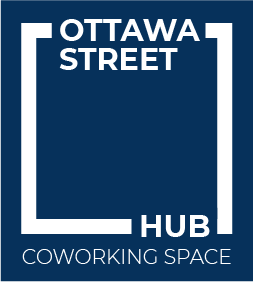Compelling Reasons to Choose a Co-working Space for Your Work
In today's dynamic and ever-evolving work landscape, traditional office environments are no longer the only option for professionals and entrepreneurs. Co-working spaces have emerged as a popular alternative, offering a vibrant and collaborative atmosphere for individuals and teams to thrive. Whether you're a freelancer, a startup founder, or a remote worker, here are five compelling reasons why you should consider working at a co-working space.
1. Fostering a Vibrant Community:
One of the most significant advantages of working at a co-working space is the opportunity to be part of a diverse and vibrant community. These spaces bring together individuals from various industries, backgrounds, and skillsets, fostering a culture of collaboration, networking, and idea exchange. By working alongside like-minded professionals, you'll have the chance to forge meaningful connections, expand your network, and tap into a pool of potential collaborators or clients.
2. Enhanced Productivity:
Working from home or coffee shops may seem appealing, but they often come with distractions that can hinder productivity. Co-working spaces provide a dedicated and professional work environment designed to maximize focus and efficiency. With comfortable seating, ergonomic workstations, and well-equipped meeting rooms, you can eliminate distractions and create a productive atmosphere conducive to getting things done.
3. Access to Resources and Amenities:
Co-working spaces offer a wide range of amenities and resources that are often out of reach for individual freelancers or small teams. From high-speed internet and state-of-the-art technology to printing facilities and office supplies, these spaces are designed to support your professional needs. Additionally, many co-working spaces provide access to conference rooms, event spaces, and even fitness facilities, allowing you to enjoy a holistic work-life balance under one roof.
4. Flexibility and Scalability:
Traditional office leases can be costly and inflexible, especially for startups and freelancers. Co-working spaces offer flexible membership options, allowing you to choose the plan that suits your needs and budget. Whether you need a dedicated desk, a private office, or simply access to communal areas, co-working spaces provide the freedom to scale up or down as your business demands change. This flexibility enables you to adapt quickly to market conditions and explore new opportunities without being tied down by long-term commitments.
5. Professional Development and Learning Opportunities:
Co-working spaces often organize workshops, seminars, and networking events that foster continuous learning and professional development. From industry-specific talks to skill-building sessions, these events offer valuable insights, knowledge sharing, and mentorship opportunities. Engaging with a diverse community of professionals opens doors to collaboration, innovation, and personal growth. By being a part of a co-working space, you can stay ahead of industry trends, expand your skillset, and cultivate a growth mindset.
Conclusion:
Choosing to work at a co-working space can be a transformative decision for your professional journey. Beyond providing a well-equipped workspace, these spaces cultivate a sense of community, collaboration, and innovation. With the flexibility, resources, and networking opportunities they offer, co-working spaces empower individuals and teams to thrive in today's dynamic work landscape. So, embrace the future of work and unlock your full potential by considering a co-working space as your next professional hub.
Live in the Hamilton area? check out the Ottawa Street Hub located at 294 Ottawa St N Unit B, Hamilton, ON.










